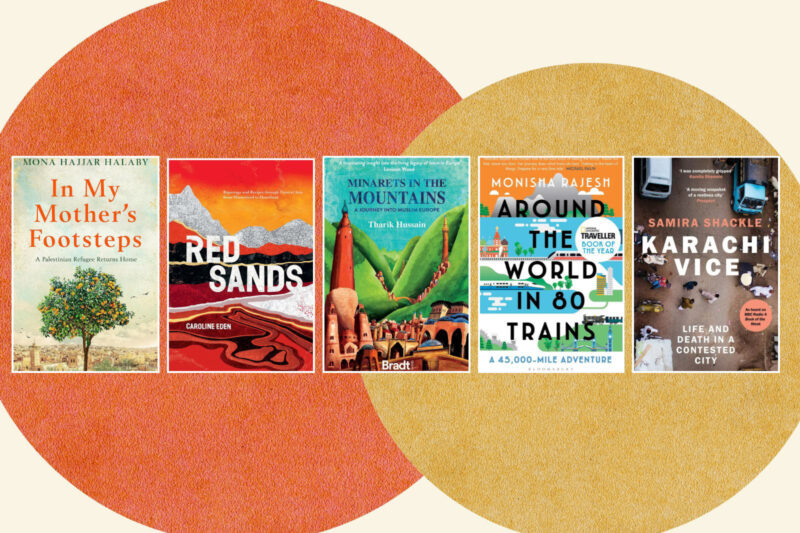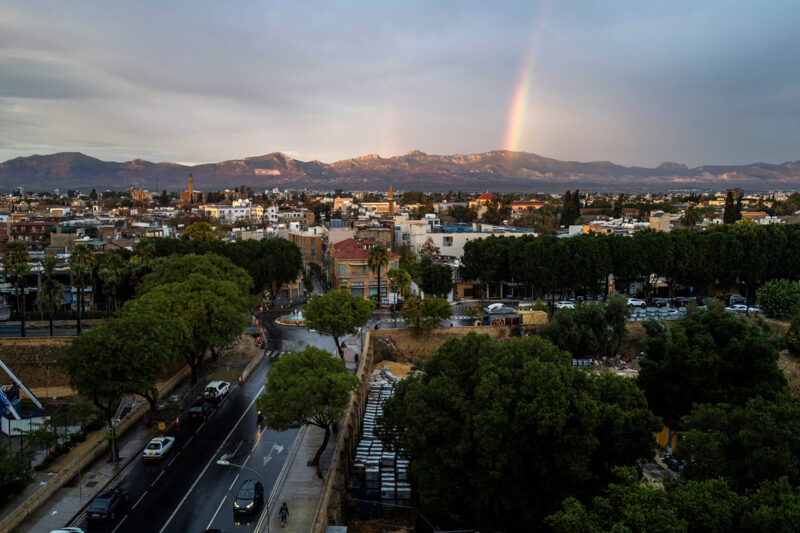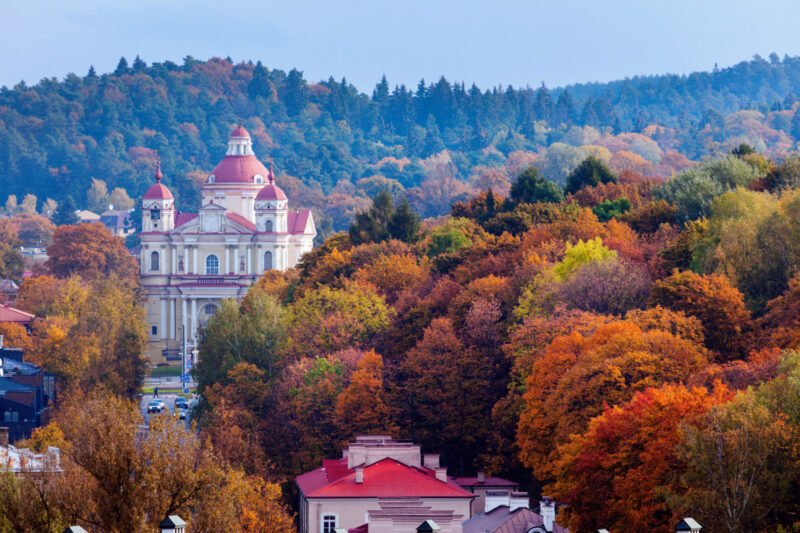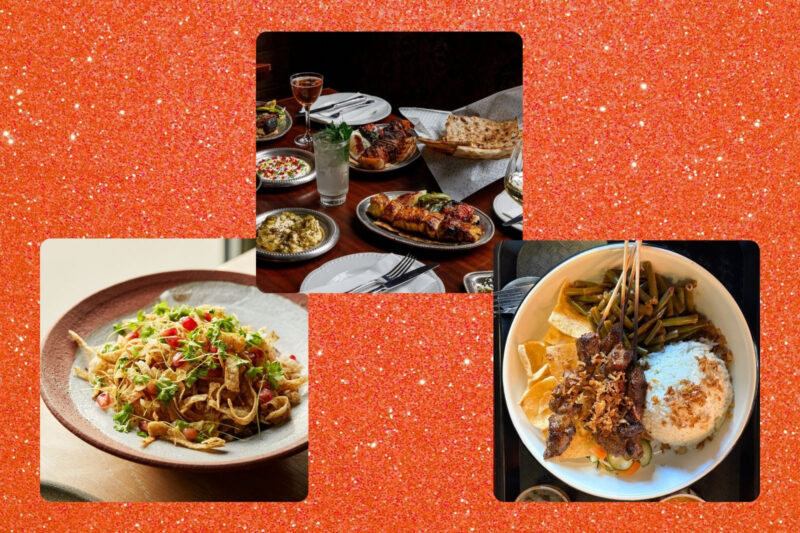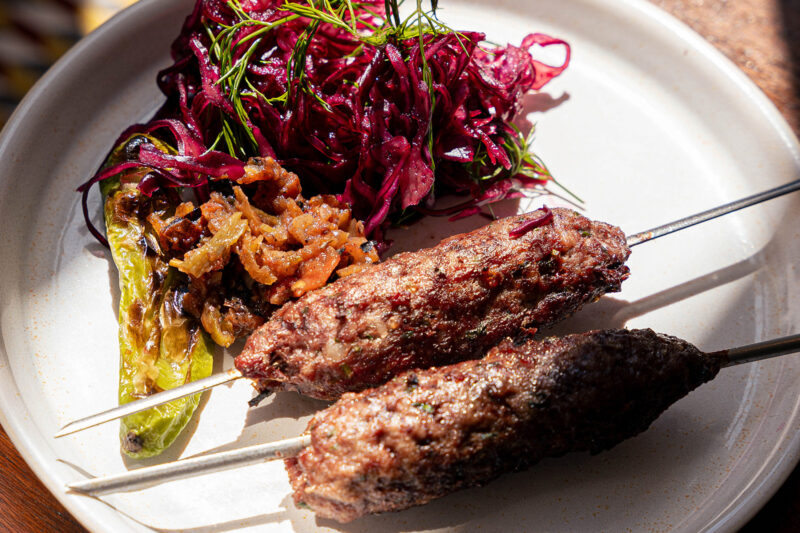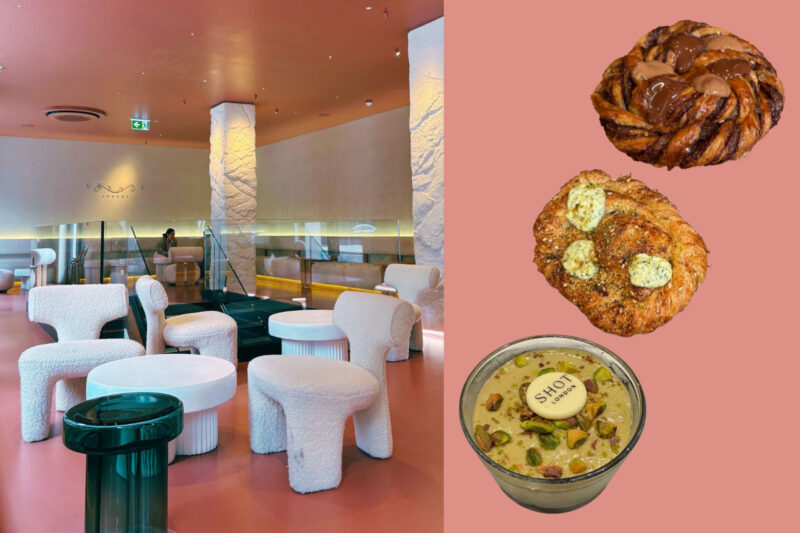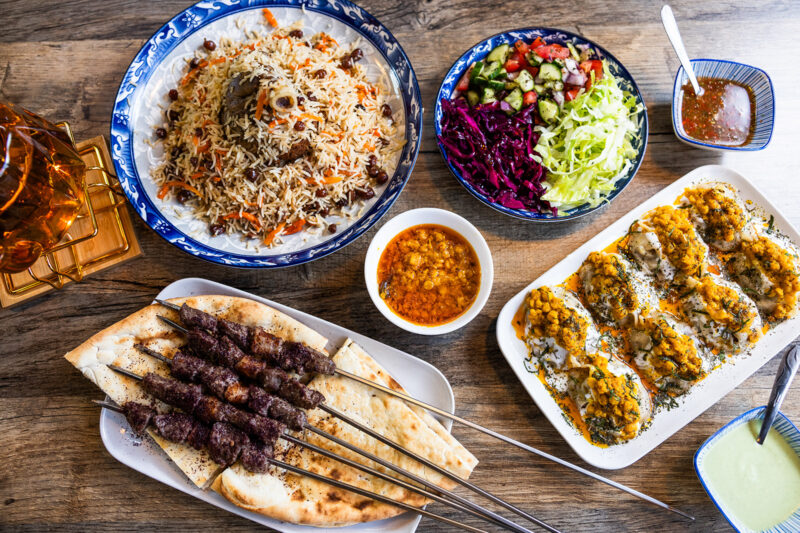‘It’s the sound of crispiness’: behind the viral rise of burek
How did the humble pastry, ubiquitous in the Balkans and Turkey, find popularity across the world?

When a mezzaluna cuts across a burek — the stuffed, savoury pastry that is almost ubiquitous in the Balkans and Turkey — a crackly, crunching sound almost reverberates as the metal hits each layer. It’s something like visual umami, watching an oven tray’s worth of burek get sliced up into portions to reveal its molten, mouthwatering filling separated by layers of filo pastry. The sight is so satisfying that a single TikTok video of a ground beef burek getting apportioned has had almost eight million views. Millions more have seen a whole host of other seconds-long crunchy burek clips, and so a humble food made best by hand has gone viral.
The charm of burek comes from both its visual appeal and the “sound of crispiness”, according to Edin Saracevic, the co-founder of MezeHub, a food service based in Washington DC that specialises in products from the Balkans, Central Europe and the Mediterranean. “It is the pizza of the Balkans and Middle East.”
You know if a burek is good “just by cutting it”, Saracevic says. “First and foremost, it’s a product of love. There are no shortcuts there. If it’s a really good burek, then you have to do it from the beginning.”
It starts with rolling the filo pastry into cylinders. A burek typically consists of four layers of croissant-reminiscent dough which is typically filled with either spinach and feta, beef mince, cheese, potato or pumpkin puree before being rolled. Then it is baked in a red-hot oven for around 10 minutes until golden brown, with chefs needing to be attentive to its progress to ensure it remains moist. It is traditionally served with yoghurt, either in a glass or heaped on top of the burek.
For Luka Medic, a food blogger from Serbia, there is no secret to the rustic allure of burek. “People recognise authentic food — they feel it,” he says. “It’s delicious and it makes you hungry.” It is a versatile pastry, eaten more commonly as breakfast, or as a snack, but it is hearty and filling, so it’s also enjoyed for lunch or dinner. “The taste, tradition and memories of our grandma cooking burek in an old oven in the village,” says Medic. “For the Balkan people, that is precious.”
Whether burek originated in Turkey, Iran, or on the road in Central Asia is a subject of debate, though the origin of the word is instructive. The Persian term bûrak was likely derived from the Turkish verb bur, which means to twist, and research indicates the consumption of burek dates back to the 7th century. A Turkish baker, Mehmed Oglu, is mythologised for bringing the recipe for burek to the Balkans from Istanbul in the 15th century. By the 17th century, the centrepiece of multicourse Ottoman banquets would be burek.
But while burek was said to have been central to Ottoman culinary culture, the historian Alexander Lee has said: “It was neither uniquely Ottoman nor distinctly metropolitan. For centuries, it had been the food of nomads and wanderers.”
To some extent, it still is. Bosnians like Saracevic are bringing burek to the world in the style of how it is served in Sarajevo, where the inviting smell of the pastry fills many streets. “We see more and more people that don’t have anything to do with the Balkan region coming to our restaurant,” he says. For some, the TikTok videos may have served as a calling card. Reams of comments beneath the clips express sentiments such as: “I don’t know what this is but I need this in my life right now.”
Despite its global spread, exceptional burek — where the pastry is light, the filling juicy and decadent — is hard to find in some places, even in the Balkans, according to Medic. Your local kebab shop in the UK will probably have burek on sale, but it is likely to be machine-made — all bold edges with none of the skinny, crispy lightness of the hand-rolled variety. However, there are a growing number of independent eateries selling the homemade delicacies in London, and a few across the country.
Burek is one of several notable phenomena shared across the Balkans — from the fruit brandy rakija to folk music — a region that was torn apart by nationalist politics during the 1990s, Medic notes. “It is something we all from the Balkans enjoy and we all made it very delicious.” The only bone of contention is what constitutes a burek. In Bosnia, only the minced beef variety is a burek, with pastries containing other fillings referred to as mere “pies” — specifically, for a cheese-filled pastry, sirnica, or zeljanica for a spinach-filled pastry. Serbian burek, meanwhile, is typically thicker, and sweet fillings like apples and cherries are popular, too. In Greece, bourekas are usually individual pastries rather than large pies.
Across cultures, making burek has been a skill passed down through generations. But Medic warns that “good burek will be more rare to find” in the future. “Younger generations don’t want to learn how to do it and there are fewer real handmade burek masters,” he says, echoing a recent report in Serbian media that bemoaned a lack of burek cooks because many young people in the Balkans and elsewhere today are more interested in seeking higher-paid jobs which do not demand long hours in the kitchen. Still, Medic says, “I hope there will be more burek masters in the future who will continue making it in the traditional way. It’s an art.”
 Newsletter
Newsletter



